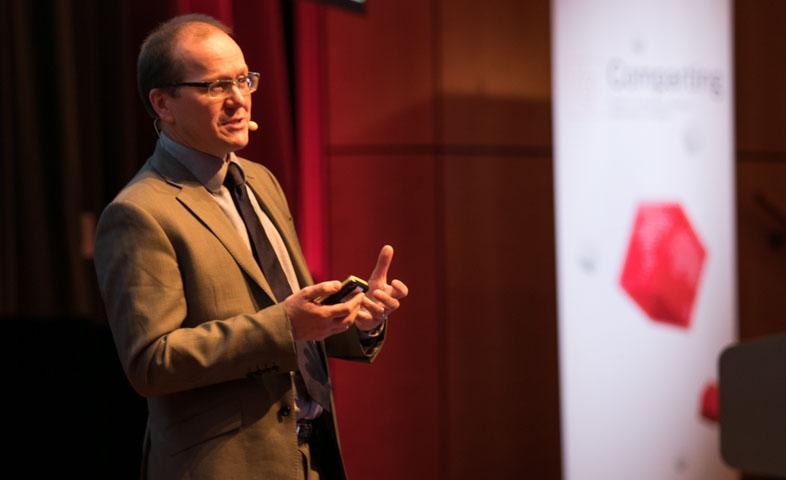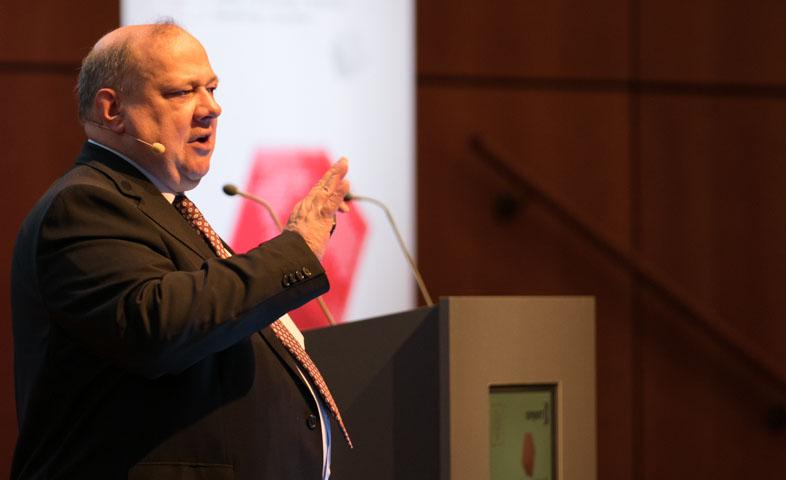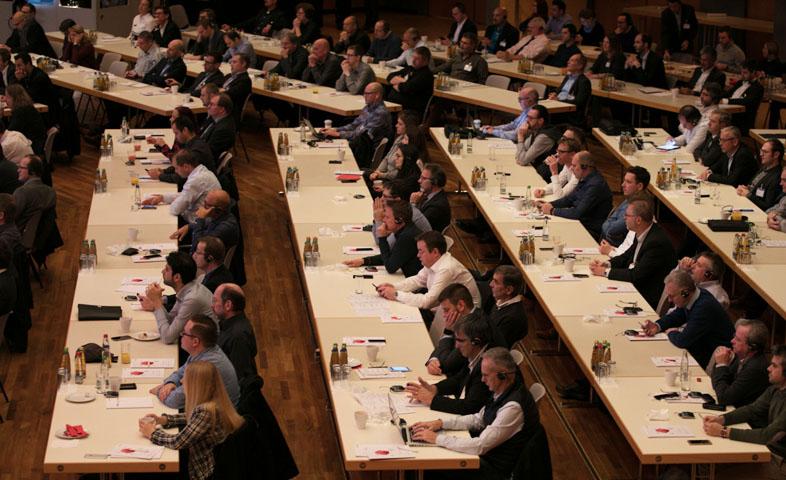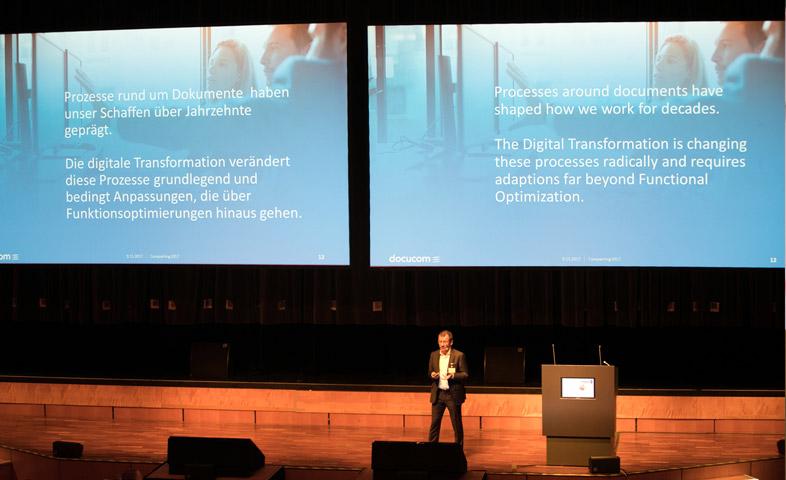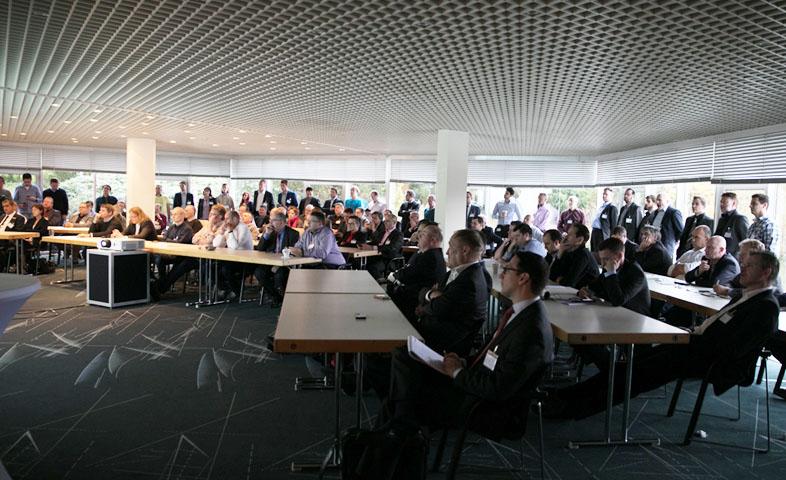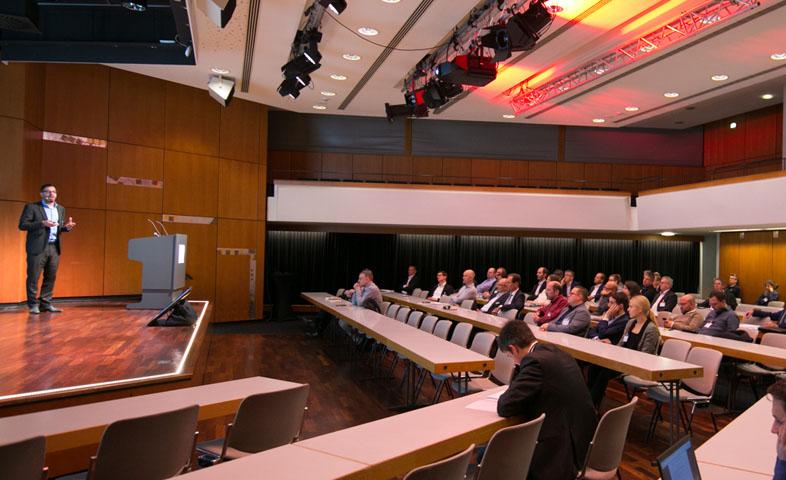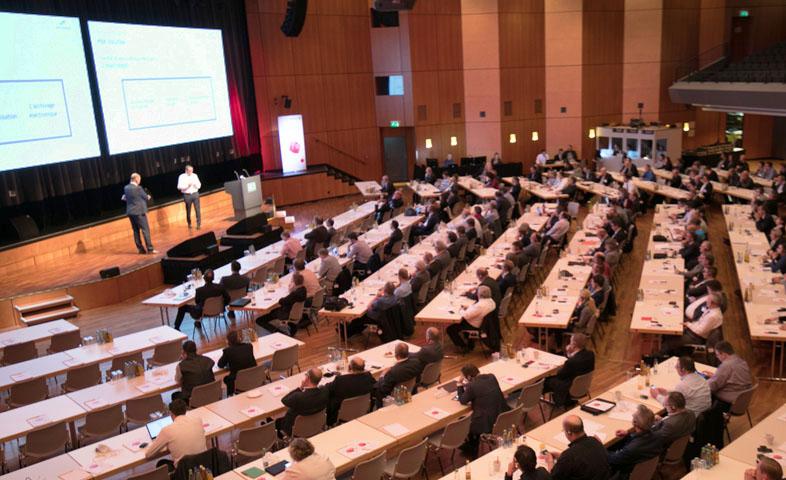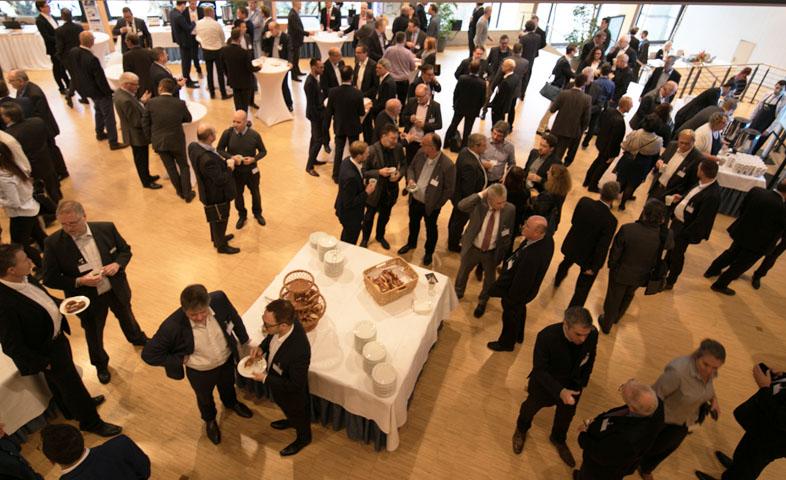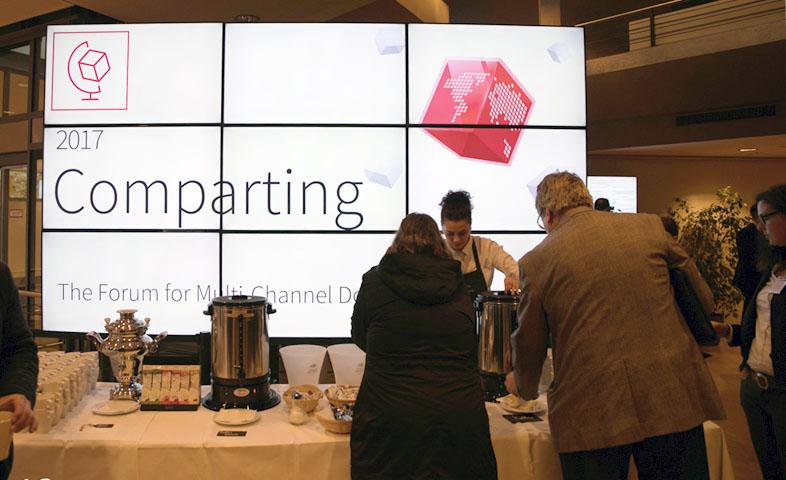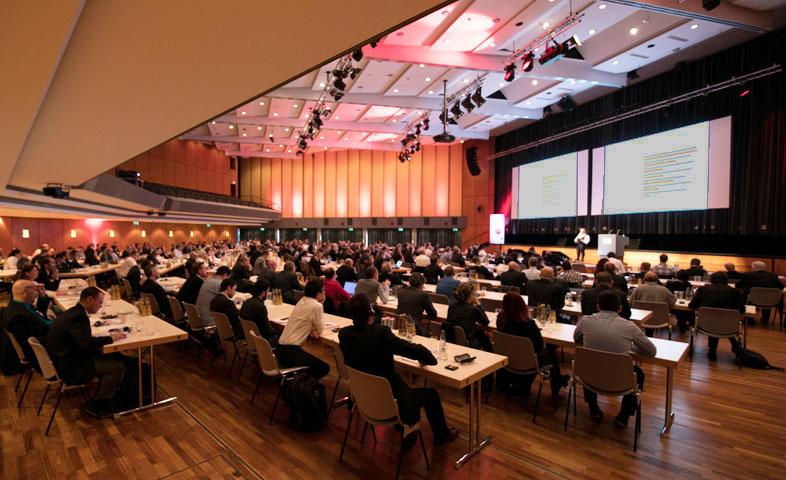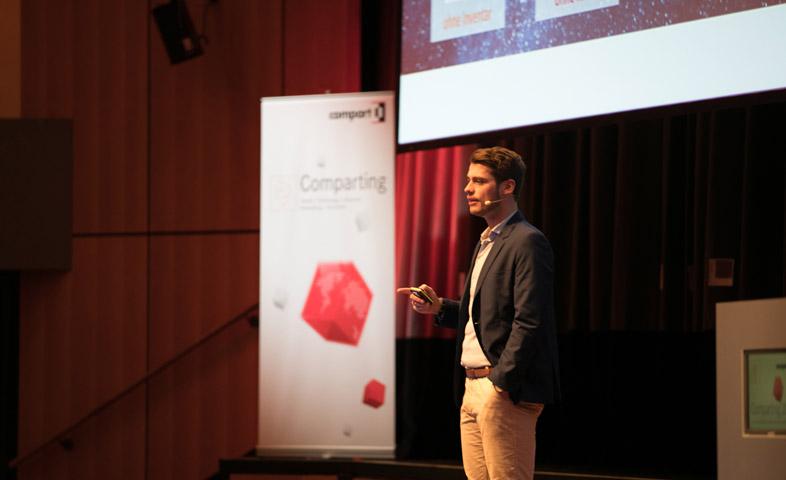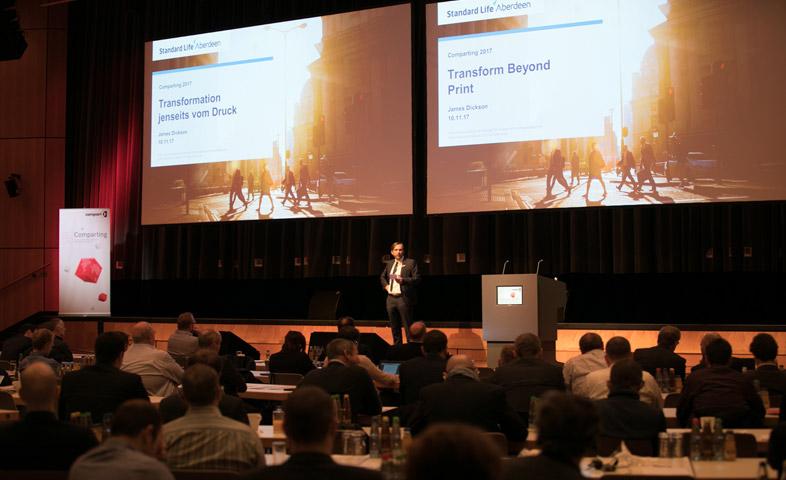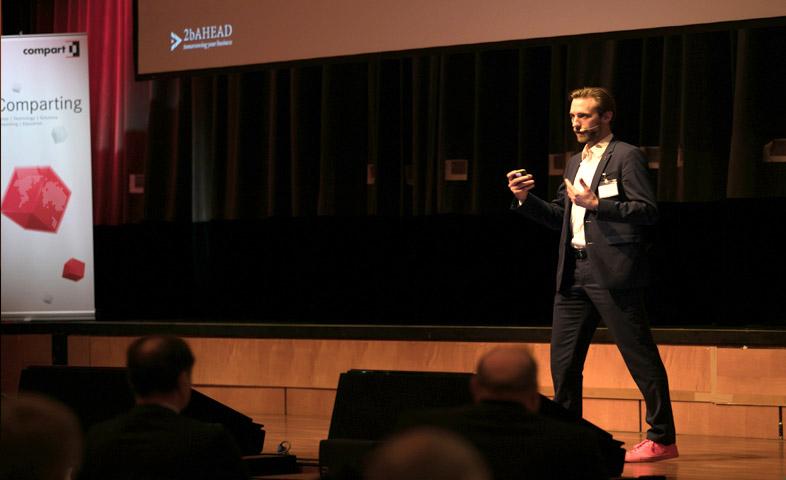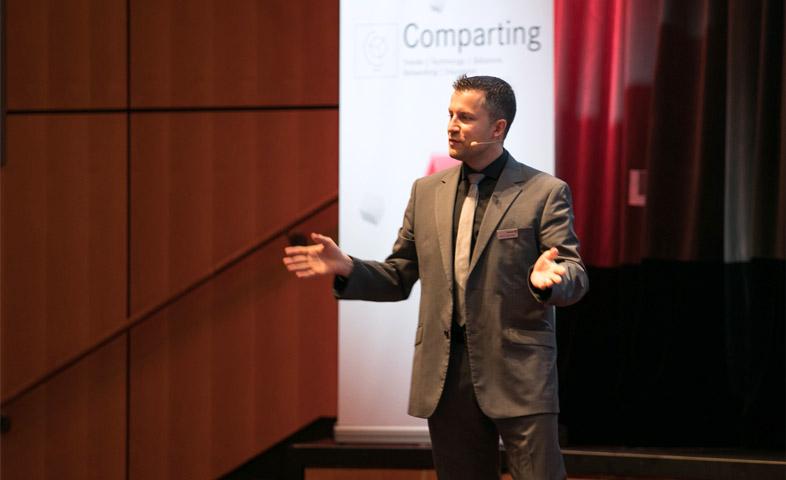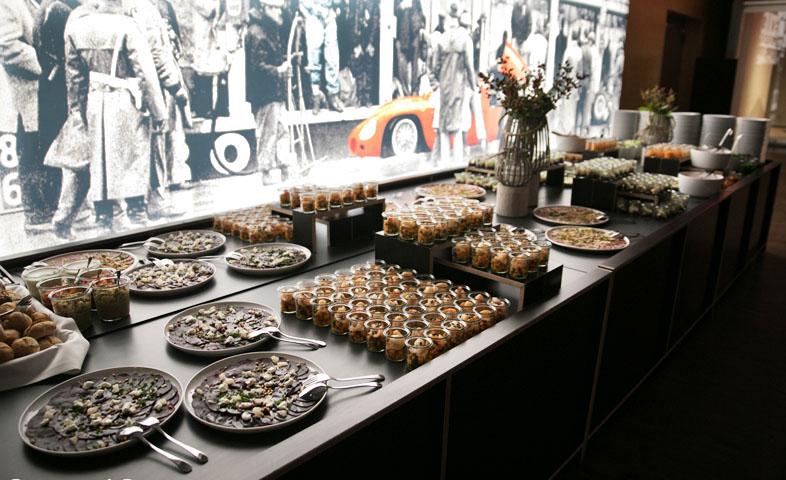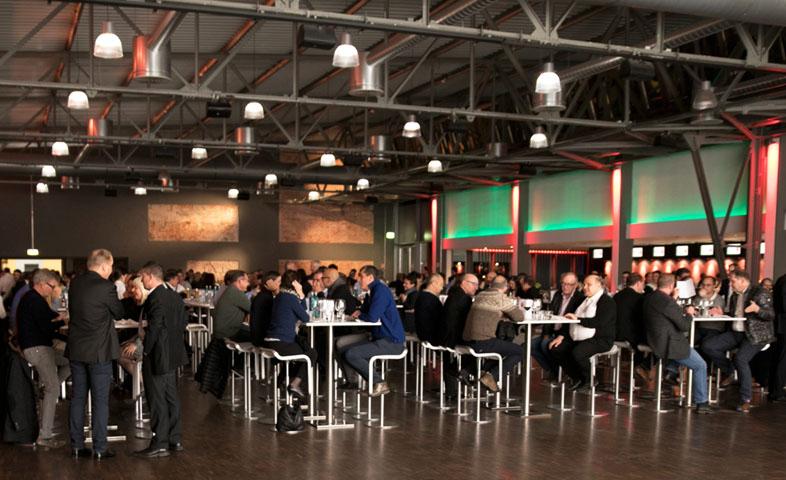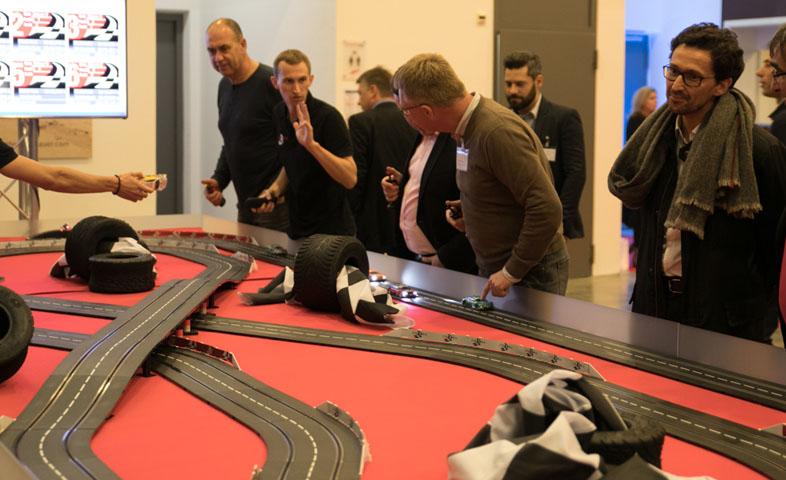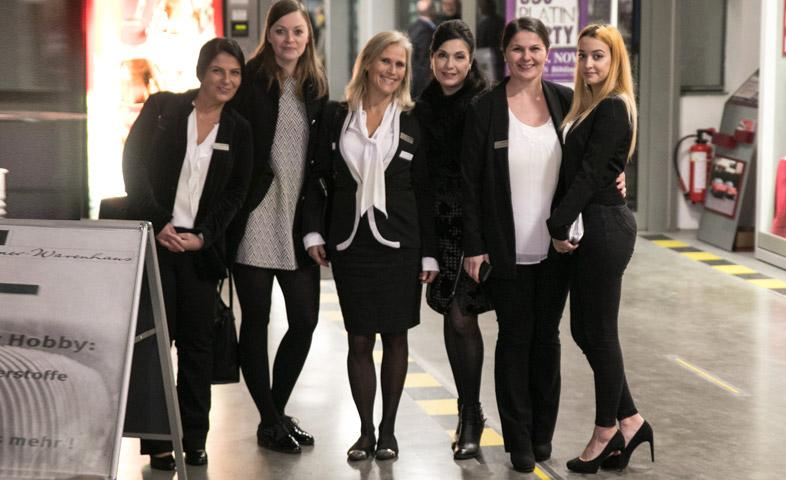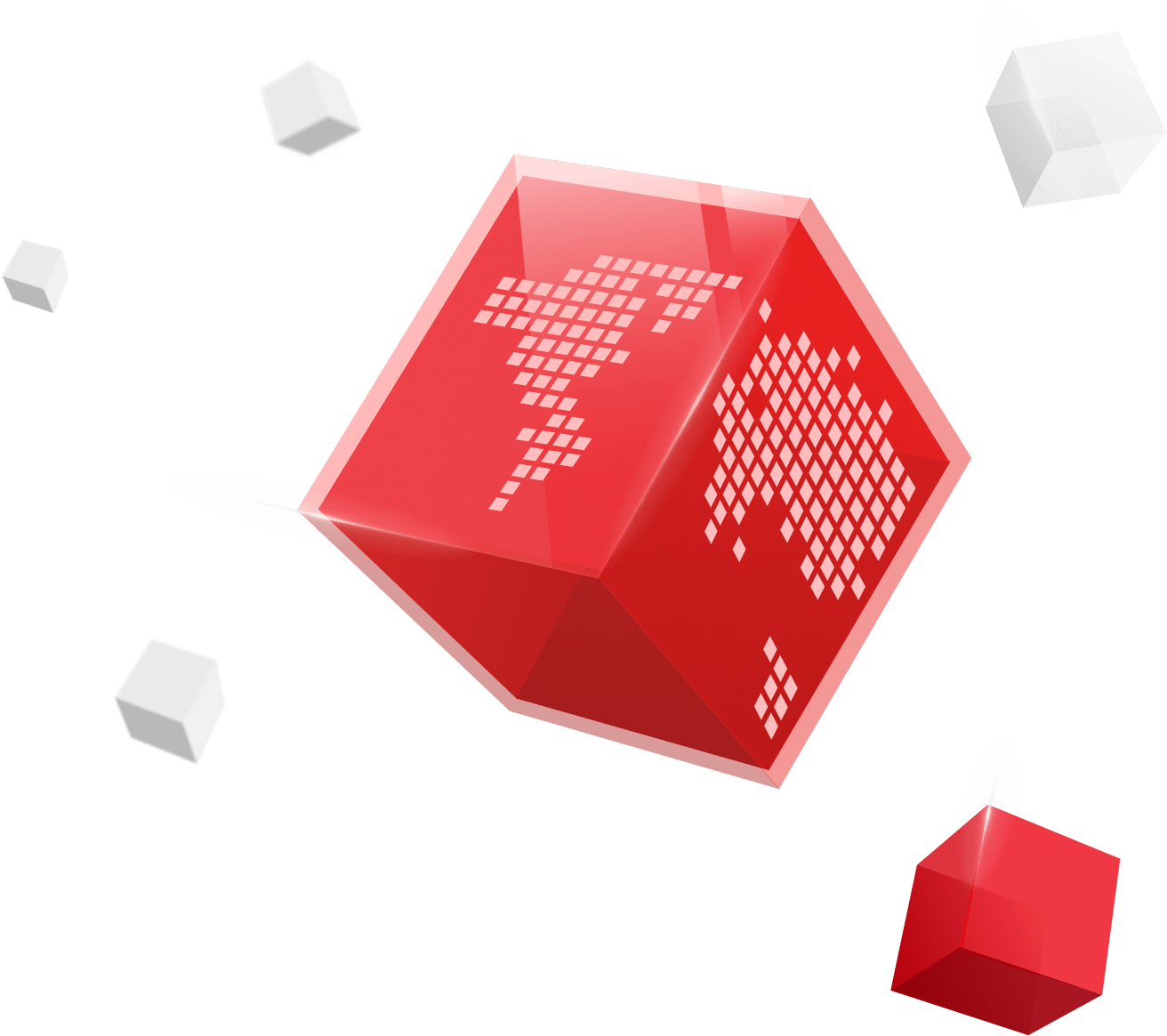
Trends | Technology | Solutions | Networking | Education
Full house in Böblingen: This year’s Comparting on November 9th and 10th highlighted the opportunities of digitalization – but the print world also had much to say. There were also several organizational improvements.

Camel or Lion?
Although the importance of trade fairs appears to be waning in many sectors, Comparting on November 9th and 10th in Böblingen posted a new record: With over 400 guests from 14 countries, attendance at the technology forum for document and output management was the highest in its 12-year history. Especially good news for the organizers: The number of first-time visitors was surprisingly high, which speaks well for the forum’s draw (14%). About half the attendees were “regulars” who for years have kept Comparting on their appointment calendar.
As international as never before
The global character of the forum was also more evident than in previous years. About 40 percent of the visitors came from abroad, most of them from France and southern Europe.
This development is no accident – after all, the conference organizer, Compart, has seen above-average growth on the international markets, as Thorsten Meudt explained when he opened the forum. The Chief Marketing Officer underscored the sustained positive business growth in the last twelve months. He attributed this to successful market positioning, especially in the German-speaking countries, France, North America and Great Britain, but also to increasingly greater integration of Compart solutions in customers’ existing core business processes. Particularly in the public sector, Compart was able to gain significant ground in all regions. Meudt also highlighted the growing number of business partnerships as a factor in last year’s success.
Demand for Central Rendition Services is rising
Demand for standardized conversion solutions as part of central archiving (central rendition service) was high. More than ever, businesses today are challenged to produce intelligent and barrier-free documents that allow for targeted information search, which requires technologies that support uniform conversion into searchable formats (PDF/UA).
Digital First
The fact is that the digitalization of business processes will continue to be a defining issue in the next several years and will shape document management like never before. Compart therefore responded proactively – with its new DocBridge Impress software and its underlying digital-first approach. The ability to generate documents that are free from page-size restrictions and based on open, nonproprietary standards guarantees that businesses can respond flexibly to the requirements of omnichannel communications. Meudt reported that since its introduction at last year’s Comparting, DocBridge Impress has enjoyed wide acceptance. The initial projects are already underway with the scalable and platform-independent solution for creating documents for print, online, and mobile output, including at Dekra, who weighed in on the second day of the conference.
More interesting insights
DocBridge Impress gains momentum
Last year, this world-renowned appraisal and inspection company implemented a central output management service (OMS) based on DocBridge Mill Plus, software for universal document processing, also developed by Compart. The company decided to replace its old system for generating correspondence with a modern solution, namely DocBridge Impress. Among other things, the intent of the migration was to standardize print preparation including output (central/local) in the organization and to integrate mobile applications, used by appraisers in the field, for example, into the document creation workflow up to and including printing. At the same time, Dekra wished to handle other central document processing tasks easily and in a standardized way (read-only archiving to PDF/A, automatic dispatch control, electronic customer communications).
Because documents created in DocBridge Impress are not restricted to a certain (predefined) page size, the documents it generates can be output on any physical or digital channel desired. They are also universally accessible (PDF/UA). This is possible because DocBridge Impress unites the major international standards for document creation and formatting under one roof (incl. HTML5, CSS, Unicode, SVG, XSL and XML).
In transitioning to the new system, Dekra sees the most value in its nonproprietary approach. Against the backdrop of digitalization, businesses can remain flexible in document processing – one reason, according to Thorsten Meudt, that DocBridge Impress will continue to gain momentum in the coming months.
Standard Life: white paper production in Scotland
Pat McGrew of Keypoint Intelligence (InfoTrends) also addressed this issue in her keynote (“Let’s get digital!”). The director and ambassador of the Production Workflow Solutions advisory service for advertising, packaging and textiles at Keypoint Intelligence/InfoTrends made it clear that every digital transformation begins with a detailed analysis of existing output management (OM) structures. Questions to address include:
- How do companies need to communicate?
- What formats are used in document processing?
- How does the fact that companies communicate in multiple languages affect OM?
- Is it difficult to integrate new communication channels into existing OM structures?
The analyst encouraged the audience to be open to the topic and to prepare early on for new media, many of which may be unknown today. One thing is certain: Digitalization will also significantly change document and output management.
That topic wound its way through the entire agenda of the two-day conference. But the “old” print world was hardly given short shrift, because in spite of all the euphoria about coming digitalization paper still reigns in many companies for reasons of compliance. This was evident in the presentation by James Dickson of Standard Life, one of the largest insurers in Great Britain, with subsidiaries in Germany and China.
With a healthy dose of Scottish humor, the manager of Print & Logistics Solutions Operations explained why the company bucked the outsourcing trend in print and mailing services in Great Britain and opted to keep them in-house.
Standard Life produces more than 90 percent of its total print output on white paper (Canon CS3200). The reason: Printing is more flexible using white-paper production technology. Companies have different print jobs, some of which vary greatly in terms of scope of format. Combining jobs is easier using the new technology, which simplified the overall workflow considerably, reported Dickson.
Print will clearly remain a hot topic in the company: In 2018, the insurer expects a transaction print volume of approximately 40 million A4 images, which is equal to nearly 12 million mailings. In view of this increasing volume, Standard Life first chose to move its white paper production onto a modern hardware base. Since 2016, the company has been using a Canon VarioPrint i300 single-sheet inkjet printer and a Neopost DS-1200 production folder inserter.
DocBridge Pilot software controls it all. At Standard Life, the tried-and-true Compart solution uses rules to prepare the individual jobs, directing them to the individual printing systems according to defined criteria stored in a database. The benefits of modernization: the lowest mailing costs in the company’s history, markedly improved throughput times in document production, and overall higher process efficiency, to name just a few. Audience feedback: one of the best presentations of the entire conference.
CEO of Compart calls for confident approach to legacy systems
Like every year, Compart CEO Harald Grumser’s presentation was eagerly awaited; it typically kicks off the second day of the conference. This year the Compart founder chose an apparently “old hat” topic, namely legacy systems. It quickly became clear, however, that how to deal correctly with long-standing legacy document and output management systems is a question that the industry still, and may always, grapple with. Grumser urged his audience not to condemn the issue but to approach it calmly and calculatedly. Open standards, like Unicode and HTML5, would help. Why? “We must always keep the house in which we live in good order,” stated the CEO. He wrapped up by explaining the title of the presentation, which was loosely based on a quote from Nietzsche. “The camel or the lion. How legacy systems progress from a strength to a burden.” Whereas the animal with the two humps patiently bears every load, even at the risk of breaking down under it, the lion would fight to preserve its free will. That’s exactly how to approach the topic of legacy systems, concluded Grumser.
Compart's new development concept (component-based architecture)
Comparting featured a good overall mix of basic lectures, user reports, and technology presentations. There was a special track for the French audience as well as an open discussion with the management of Compart Southern Europe. The forum thus reflected the increasing importance of the French market to Compart.
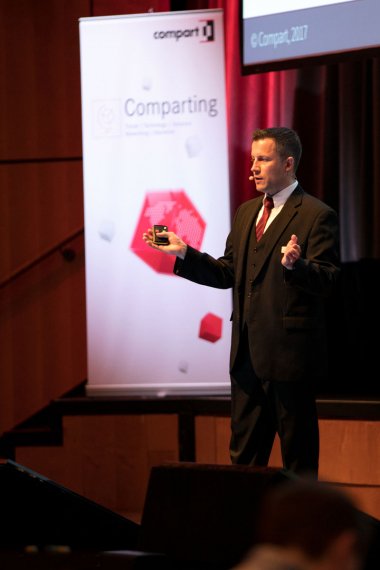
Like every year, the “From the Compart Lab” segment was particularly well attended. The audience was eager to hear about innovations from product and basic development. Cornelius Dufft, Head of Development, introduced a new component-based architecture, a modern concept based on so-called microservices that will be successively added to the Compart portfolio in the coming years. Among its basic advantages are improved scalability, faster implementation of new customer requirements, and simplified integration and operations.
For the first time this year, attendees had access to an app especially developed for Comparting for providing feedback and posting questions to the presenters, which were then visible to everyone on a large screen. Likewise, many speakers used the app during their presentation to survey the audience on specific issues, such as the relevance of new types of digital channels.
With few exceptions, all presentations were interpreted into the three conference languages of German, English, and French. For the journalists from Germany, France, Spain and Italy, CEO Harald Grumser and the regional managers (Northern Europe, Southern Europe, and USA/Canada) hosted a press roundtable focused on the latest developments in document and output management.
The response to the conference was overwhelmingly positive. The majority of attendees praised its excellent organization and especially the multiple networking opportunities.
The next Comparting will be held November 15–16, 2018.
Brief info and registration on the Compart website.
Read the review of David Stabel and Pat McGrew
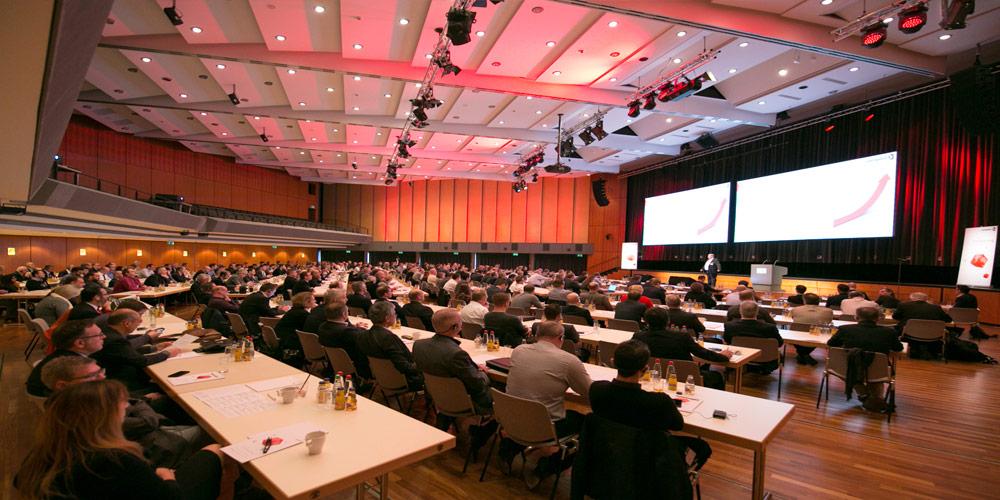
Background Information
Comparting is an annual international technology forum for omnichannel document and output management that attracts companies of all sizes and industries. The two-day forum is particularly noted for its high-profile user reports from Germany and abroad as well as the wide range of topics. The number of attendees has grown steadily since the first forum nine years ago. This year more than 400 visitors from Europe and North and Latin America are expected. The forum features multiple tracks with proven technology sessions, a press roundtable for journalists and more than ample opportunities for networking.
Program
Theoretical and practical knowledge around document processing and output management.
"Very informative event with plenty of room for specialist exchanges and networking."
Comparting attendee


